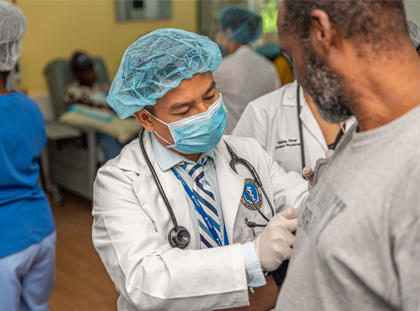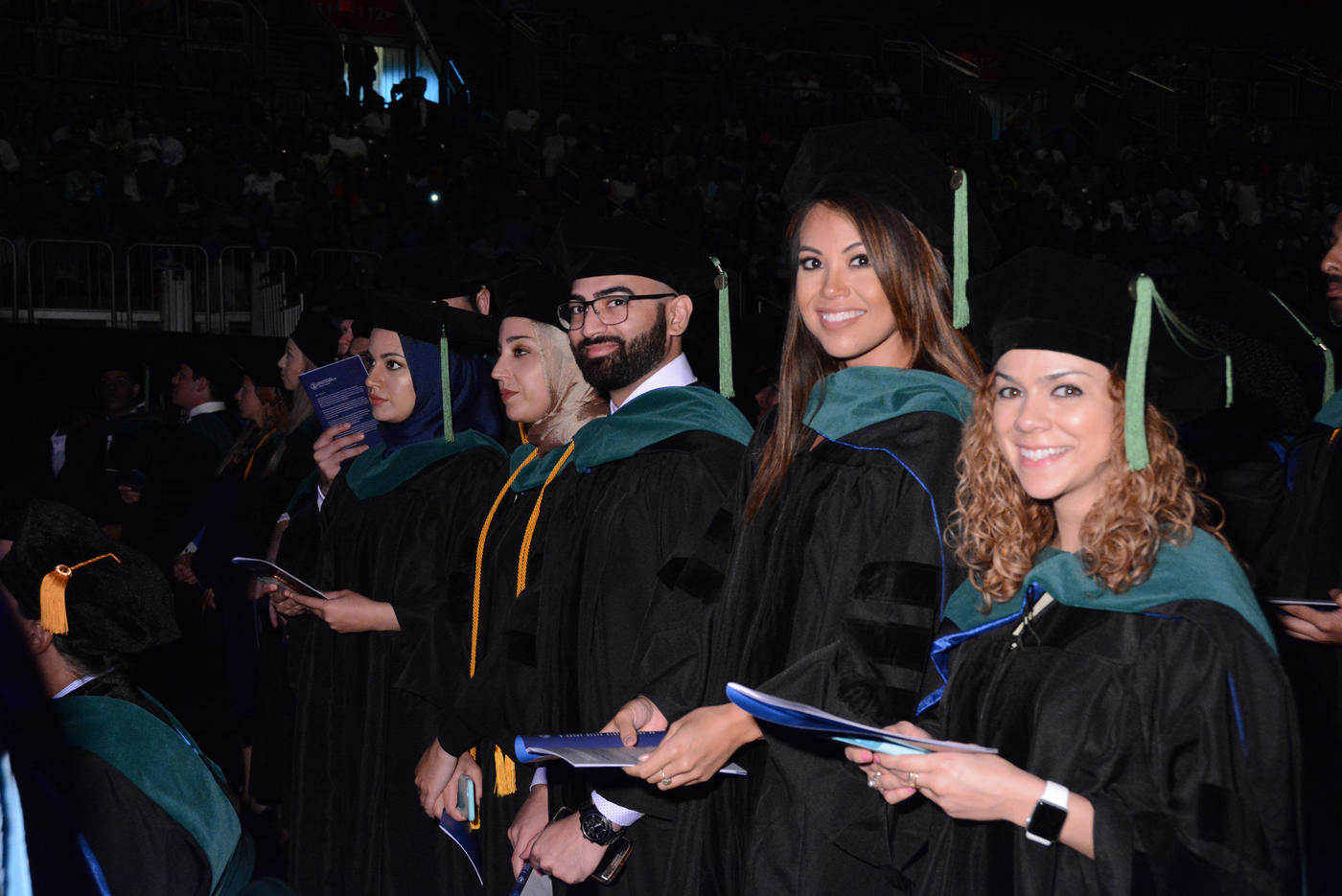Getting into medical school is a great achievement, and it places you among an elite group of students. Accredited medical schools—such as Ross University School of Medicine (RUSM)*—are known for being complex and challenging, and they accept only the best applicants. Students who graduate from medical school are well on their way to becoming doctors and having a positive impact on the health of their communities.
Many prospective students know that a medical school white coat ceremony awaits them as they enter medical school, and many may wonder, “What is a white coat ceremony?” The medical school white coat ceremony is a rite of passage that celebrates the beginning of your time as a medical student. This ceremony is full of symbolism but, as the name suggests, it is characterized by medical students receiving the white coat traditionally worn by those studying medicine.
The Day of Your White Coat Ceremony
The medical school white coat ceremony may vary depending on the specific medical school’s traditions, but there are several common features shared by most white coat ceremonies. These core features are intended to be both a celebration and a rite of passage as you begin the challenges of medical school.
Meeting Your Fellow Classmates
For many schools, the medical student white coat ceremony occurs prior to orientation and is likely to be the first time you will meet your fellow medical school students. During medical school, you will spend four years training with your classmates, going through difficult academic studies and clinical school experiences that will be unique to your class.
The white coat ceremony is a great time to create lasting relationships with the people who will share the triumphs and tribulations of medical school with you for the next four years. White coat ceremonies for new medical students provide a celebratory atmosphere that recognizes the special bond between physicians in training.
Speech
Almost every medical school white coat ceremony involves speeches by distinguished guests, experienced medical professionals, or members of the college’s academic faculty. The speakers typically congratulate the new medical students on their success in getting into medical school, but the speakers also emphasize that the accomplishment is merely the beginning of their medical education. Speeches during white coat ceremonies often provide new medical students with important insights on how to succeed as a training physician, and they remind students of the importance of the undertaking.
Placing of the White Coats
Medical school white coat ceremonies get their name from the white coats that each new student receives and will wear during their medical training. The white coat is full of symbolism and shows that you have transitioned into a student of medicine.
The coat that you are given during your white coat ceremony will normally be short, coming to just under your waist. The length of your white coat is significant and indicates where in your medical training you are. Medical students will normally wear a short white coat, indicating that they are physicians-in-training, but are not yet practicing doctors. After graduation, first year residents normally wear a medium length white coat, and after completing their first year of residency, students will at last wear the long white coats of physicians.
Recitation of the Hippocratic Oath
New medical students researching what happens at a white coat ceremony will find that the recitation of the Hippocratic Oath is an important part of the ceremony. The Hippocratic Oath is a solemn event, in which students swear to uphold the ethical obligations of the medical profession.
The actual text of the Hippocratic Oath—which originated in Ancient Greece—may be adjusted based on the particular school, and some institutions, or even individual students, may opt to take variations of the Hippocratic Oath or an alternative professional vow. At Ross Med, students recite the Oath of Geneva, only slightly modified from its original form, which was adopted as a modern version of the Hippocratic Oath by the World Medical Association (WMA) in 1942.
The Hippocratic Oath is something that medical students take quite seriously, and you may wish to review the oath you will be reciting and ensure that you are comfortable with the commitment you are making. Some schools may offer the opportunity to pledge to an alternative oath and some schools even have students agree on a specific oath that is unique to their class.
White Coat Ceremony For New Medical Students
New medical students may wonder, “what is a white coat ceremony and how should I prepare for it?” White coat ceremonies do not typically require much preparation and are a generally relaxed event that should not create extra pressures on you as a student. While the ceremony is often simple, some preparatory steps may be required.
Registration
Every medical school will be different, but you will likely have to undergo some kind of simple registration process. This may be a short form you fill out with your information or it could be as simple as stating what size coat you will need.
Rehearsal
For many medical schools, there is no rehearsal for the white coat ceremony and you just show up on the day of the event. If you do not have a rehearsal, your school will provide instructions beforehand on where to sit, details on the course of events, and when to walk up to the stage to receive your white coat. Some medical schools do have rehearsals, however, where you practice participating in the ceremony. If there is a rehearsal, expect it to be relatively straightforward and simple.
At RUSM, the white coat ceremony is a memorable day in which students are welcomed to medical school, their achievements are celebrated, and the importance of undertaking a medical career is emphasized. RUSM is committed to the success of the next generation of physicians. Learn more about the RUSM MD program, and then apply for admission today!
Related Resources:



